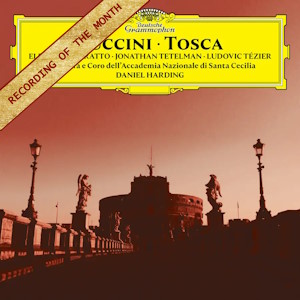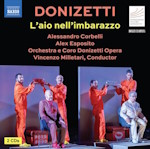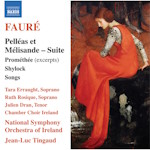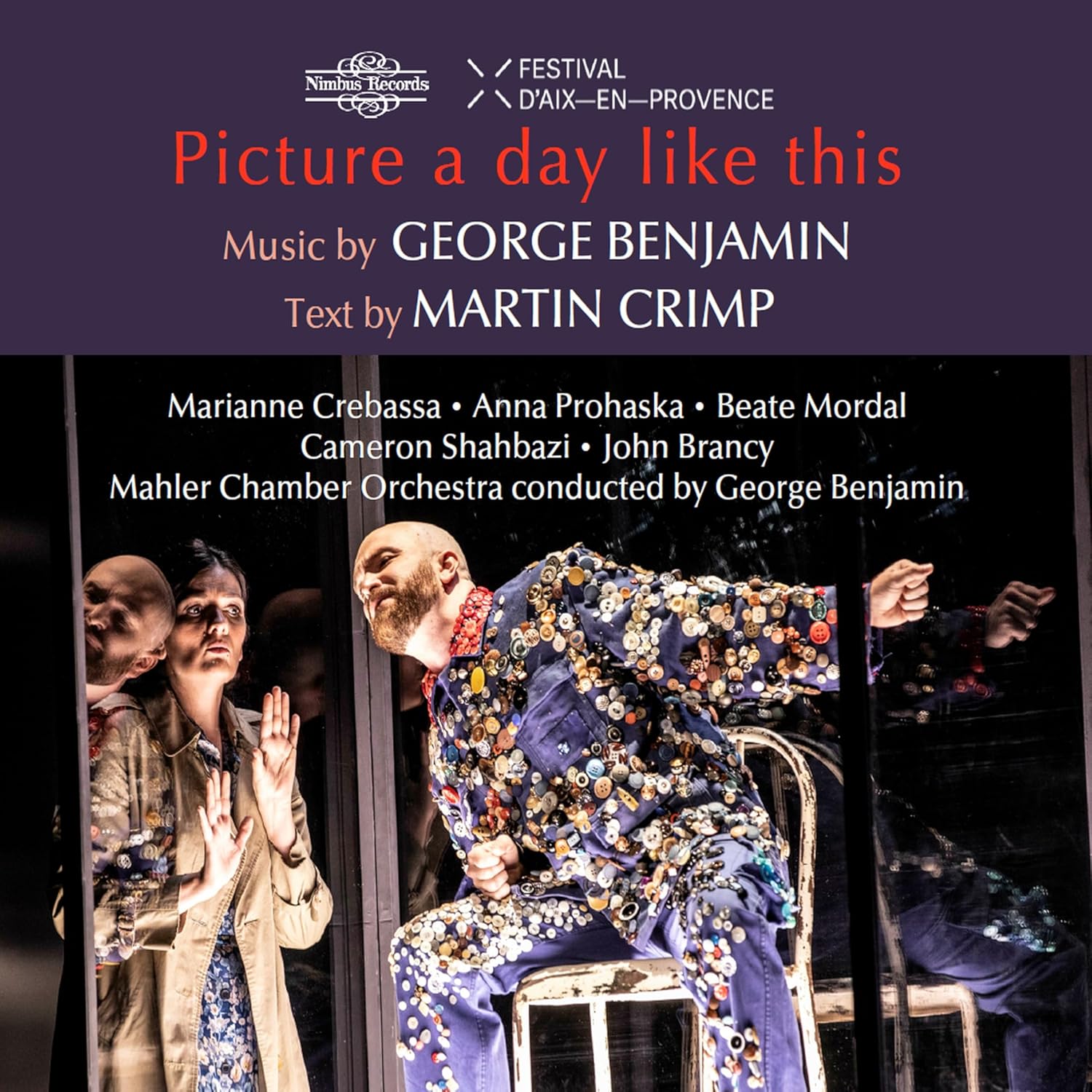
Giacomo Puccini (1858-1924)
Tosca (1900)
Floria Tosca – Eleonora Buratto (soprano)
Mario Cavaradossi – Jonathan Tetelman (tenor)
Scarpia – Ludovic Tézier (baritone)
Orchestra, Coro e Voci Bianche
dell’Accademia Nazionale di Santa Cecilia, Roma/Daniel Harding
rec. 2024, Auditorium Parco della Musica, Santa Cecilia Hall, Rome, Italy
No libretto enclosed
Reviewed as download
Deutsche Grammophon 4866997 [2 CDs: 114]
Older collectors have long had their favourite recordings of Tosca. De Sabata’s classic version from 1953 with Callas, di Stefano and Gobbi will never be redundant, in spite of its technical shortcomings. Leinsdorf’s RCA recording from 1957 is in stereo and the trio Milanov, Björling and Warren also has a horde of advocates. Still more enthusiasts fancy Herbert von Karajan’s early 60s Tosca, with Leontyne Price, Di Stefano (again), and Giuseppe Taddei. I belong to that group, even though Di Stefano is a kind of weak link, but I also have on my short list the Decca (originally Philips) set from the 1970s conducted by Colin Davis with Caballé, Carreras and Wixell. Besides this quartet there is a queue of runners-up, and the likelihood that anyone can find a recording of Tosca with her/his favourite singers is high. Do you like Tebaldi and Mario Del Monaco? They are there! Birgit Nilsson and Franco Corelli? They are there – with Fischer-Dieskau! What about Renata Scotto, Kiri Te Kanawa, Domingo and Pavarotti? They are there too – and a lot of others. I have all of them and they are definitely not bad, but when it comes to a final choice it is the quartet I mentioned first that gets the votes. However, even the newest of them is almost fifty years old.
Now here comes a brand-new issue with chorus and orchestra from the Eternal City. It has also been recorded there – and the opera takes place there – with two of the hottest new names together with a great veteran in the third central role; mouthwatering, isn’t it?
The Accademia Nazionale di Santa Cecilia is one of the oldest musical institutions in the world with origins from the 16th century. Their chorus and orchestra have graced innumerable opera recordings, and it seems that the arrival of Daniel Harding as Musical Director this season was the start of a new era. Oxford-born Harding has been chief conductor of the Swedish Radio Symphony Orchestra since 2007, and in 2016 he also took over the same post for the Orchestre de Paris. The performances of Tosca in October were timed to coincide with the commemoration of Puccini’s death one hundred years ago, and expectations were high at the prospect of hearing Eleonora Buratto’s first Tosca in Italy – she had sung the role only once before, in Munich in the spring. Tetelman was already known for his Cavaradossi, and his greatly acclaimed Puccini recital a couple of years ago (review) had already designated him as Puccini interpreter. Since I reviewed it, I knew his capacity, and I will return to my response before long.
However, there are several roles besides the three main characters that also have some importance in this opera. The first voice we hear is Cavaradossi’s friend Angelotti, who has just escaped from prison and now searches for something in the church. He is weak and emaciated after many months in a dark prison cell, but his fighting spirit is undiminished, and that should be heard in his voice. Giorgi Manoshvili is fresh-voiced and expressive, and in the following scenes in the first act he becomes a real character. That is also a suitable description of Davide Giangregorio, the sacristan, who is supposed to be the buffo in this play, but he avoids being too burlesque. Fernando Corena, the sacristan in the Leinsdorf and Karajan recordings (and also the Tebaldi and Del Monaco) is truly funny, but with subtler means Giangregorio is just as effective. The remaining comprimarios are fully up to the requirements.
Which brings us back to the main characters. Cavaradossi appears shortly after Angelotti has hidden, and he is an ardent – and very handsome – matinée hero. Recondita armonia is gloriously sung – and not without nuances. The arrival of Tosca outside the church also sends a shiver of ecstasy down the spine. Here is another classy voice, with a bite and intensity that makes one remember Maria Callas – only steadier. I got the same feeling when I reviewed Eleonora Buratto’s recital a couple of days earlier. Her voice is slightly vibrant, but her capacity of volume seems endless, and of course Callas is for ever connected with Tosca. The long love duet, which occupies a big portion of the first act is, with good singers, a heaven for voice fanciers, and I urge readers to try to listen to the end of the duet (CD 1 tracks 8 and 9).
Scarpia appears towards the end of the act, and here is another master in his trade. Ludovic Tézier may be unknown to some readers, but he has been an important singer, primarily in French repertoire, for many years. Now in his late fifties, he is still in prime condition, and Scarpia has become a signature role. He doesn’t possess the most ingratiating voice, but he has an impressive array of nuances, from almost whispering intimacy and alluring sexuality to snarling wrath and autocratic dominance. He can’t erase the memory of Gobbi and, even more, Taddei, but he is a worthy antithesis to the loving couple. He dominates the second act, but the musical high spot in the act is Tosca’s prayer, which is both vulnerable and intensive. In the prelude to the short third act, Puccini paints an atmospheric, impressionistic of the dawn with the shepherd boy’s distant song sensitively sung by Alice Fiorelli’s frail soprano. When the first rays of sun reach the parapet of Castel Sant’Angelo we already hear the first phrases of E lucevan le stelle in the orchestra, and when the famous clarinet solo introduces the aria one can anticipate a soft opening. Tetelman delivers beautifully in a memorable reading with sensitive phrasing and ideal legato. With Tosca’s arrival and the safe conduct, that spell is broken and the rest is high-octane dramatic singing, with a short lyrical intermezzo when Cavaradossi sings O dolci mani, soft and tender-hearted, almost challenging Björling’s legendary reading. Buratto is again Callas-like in her ecstatic outpouring of power, only to be outdone by the volley of the firing squad, quite ear-splitting.
The sound is spectacular in every respect; as I understand it, it was recorded live during concert performances. There are several photos in the booklet but there are no signs of an audience and no applause. Remarkable! Daniel Harding’s conducting is flexible, handling the dramatic climaxes with authority, but also caring for the lyrical moments.
At the moment I am overwhelmed by this recording, and will return to it with pleasure. Whether it surpasses the four classic recordings I have listed is another matter. Other listeners may have different opinions, but as far as I can judge it is the best Tosca released in the last half century.
Göran Forsling
Buying this recording via the link below generates revenue for MWI, which helps the site remain free.

Other cast
Cesare Angelotti – Giorgi Manoshvili (bass)
Spoletta – Matteo Macchioni (tenor)
Il sagrestano – Davide Giangregorio (bass)
Sciarrone, gendarme – Nicolò Ceriani (baritone)
Un carceriere – Costantino Finucci (bass)
Un pastore – Alice Fiorelli (soprano)

















